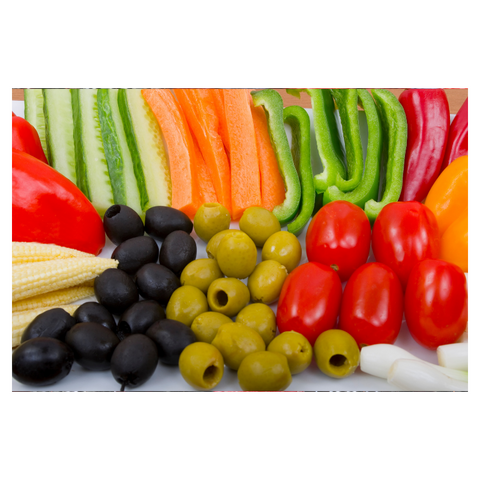We’re used to toddlers being picky but what if your school-age child refuses to eat up? We asked two child nutrition experts to share their tips
Full of good intentions, you lovingly prepare a home-cooked meal, only to receive repeated requests for fish fingers. But don’t be tempted to turn your kitchen into a one-woman cafe service. If the meal you’ve cooked is refused, avoid making anything else, as this only gives the message that it’s worth holding out for a second or third option.
Make mealtimes a happy occasion. Avoid putting on overt pressure to ‘eat up’ or letting an argument develop. Keep mealtimes upbeat, with no screens or phones at the table.
Model good eating. Let them catch your own enthusiasm for food. Even if it’s only a couple of times a week, try to all eat together as a family. We know that's easier said than done, juggling after school clubs and multiple pick ups.
Take the pressure off meal times by including healthy foods at snack time while your kids are distracted - for instance, when they’re playing on their screens/watching TV is an ideal time to put a small plate of healthy foods next to them. Try chopped carrot, cucumber or celery sticks, or edamame beans. Often they’ll start snacking without even noticing what they’re eating. Still keep to set mealtimes so you can make sure they’re hungry when they come to the table.

Invite friends of the same age, who you know are good eaters, over for dinner. Don’t overtly praise the guest for their good habits, but hopefully the desire to conform will stop your own children rejecting the food you’ve prepared.
Be careful they haven’t filled up on drinks before a meal. While milk is great for their teeth and bones, it can also be very filling so try to save it for later in the evening.
It’s best not to use food as a reward, as you don’t want your child to view dessert as good and the main course as bad. Instead, reward them with a trip to the park or by playing a game with them.
Don’t overload their plate. Serve small portions and praise them for eating, even if it’s a fairly small amount.
Ask your child to help you choose a new recipe for dinner, then let them help make the shopping list with you and come to the supermarket to buy ingredients. Ask them what they’d like in their lunchboxes and as an after-school snack (steering them towards healthy choices, e.g. sugar-free, cereal bars; multi-grain crackers; rice cakes; oat cakes and fresh fruit etc), then add to the list. Giving them more autonomy might help to expand their food choices.
To put the fun back into cooking, make a simple recipe together, such as savoury carrot flapjacks. See www.myfussyeater.com/savoury-carrot-flapjacks. Cut them into individual portions as mini gifts for friends and family, then pop in a paper food bag stamped with our gorgeous ‘Homemade by’ Personalised Baking Rubber Stamp.

Expand their food range gradually and don’t give up. It’s easy to add various foods to the ‘won’t eat’ list but it can take 10-15 attempts before children will accept certain foods. Ideally bring a variety of foods to the table regularly, accepting some may be rejected. Avoid making a big deal of a new food by highlighting, ‘I know you’re not going to like this but…’ Simply serve it up to the whole family. Keep offering the rejected foods now and then.
Create a build-your-own meal with individual ingredients in separate bowls such as various dishes of pizza toppings including tomato, sweetcorn, mushrooms, cheddar, mozarella and fresh herbs so everyone can add their own. Alternatively, try tacos with beef mince or quorn and bowls of cheese, mild salsa, guacamole and lettuce. Once it’s cooked, take turns to cut a slice with our fun Pizza Scooter Cutter 🍕
If you have time, liven up their lunchbox with little notes, toys, a mini knife and fork or even a special paper napkin to make it more appealing.
Teach them about food. Google together where certain foods come from, which other countries they’re eaten in etc, then add the new ingredient into your cooking. Grow-your-own activities are also a great way to capture their interest. Start with something simple such as cress.
Children aged seven upwards are old enough to understand about nutrition. Find something that’s important to them and explain why they need certain nutrients – e.g. ‘You need to eat something green every day so you can keep your immune system strong and be fit enough to play lots of sport.’
With thanks to nutrition consultant Charlotte Stirling-Reed of www.srnutrition.co.uk and nutritionist Lauren Southern of www.londonfoodtherapy.com







